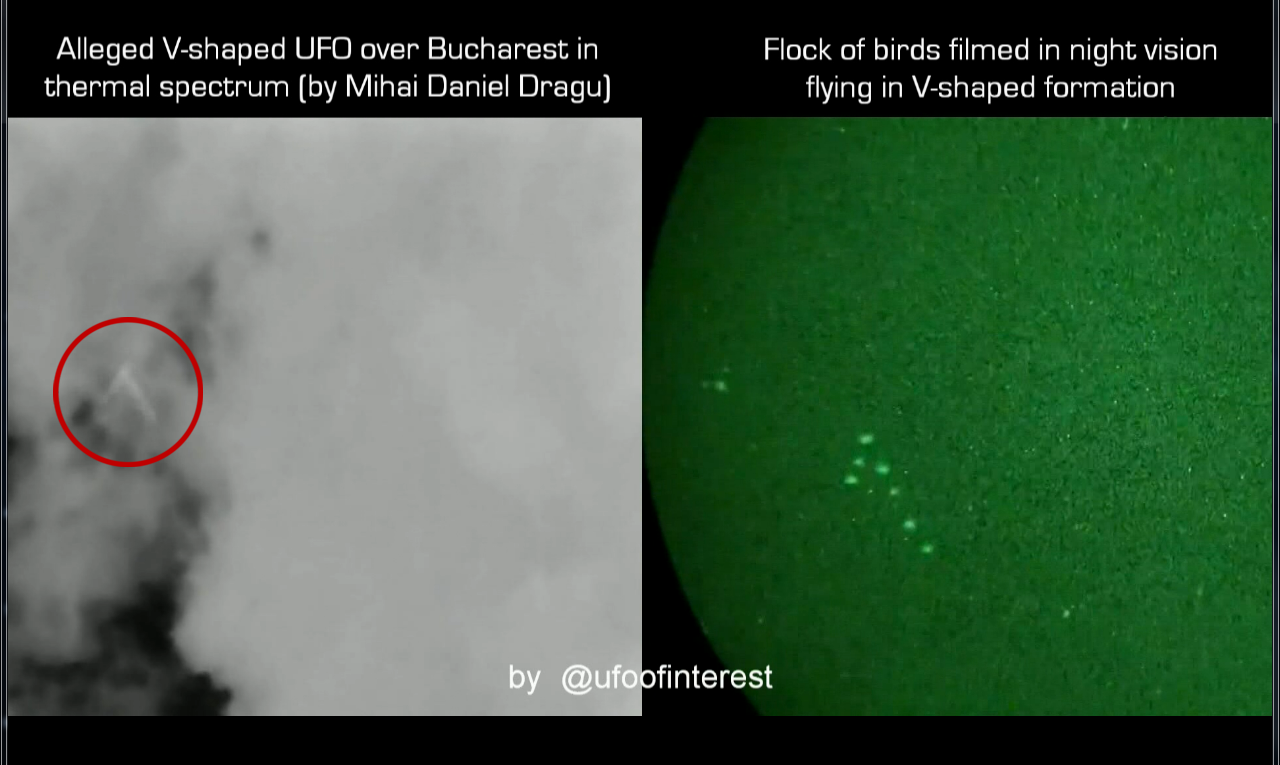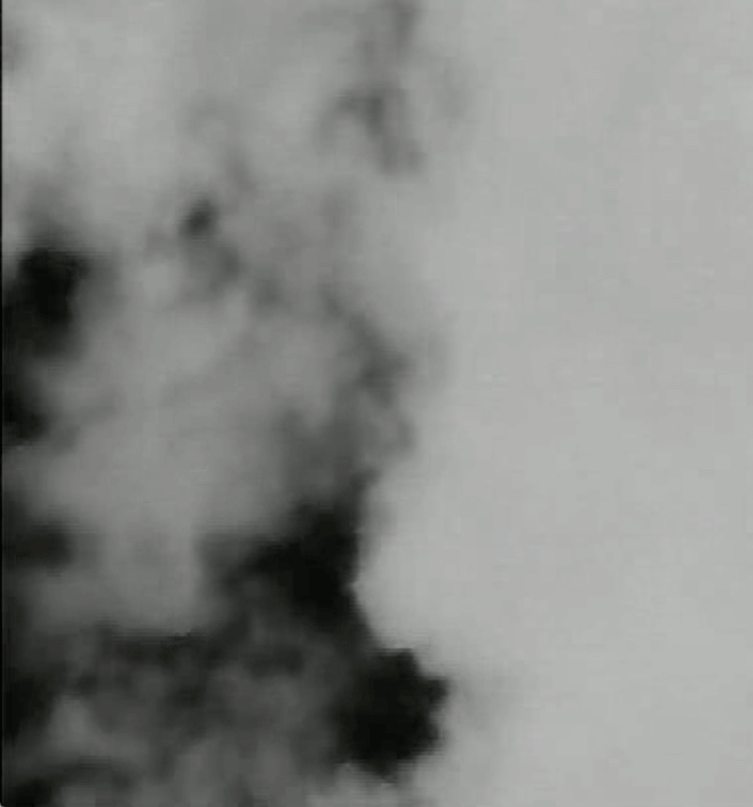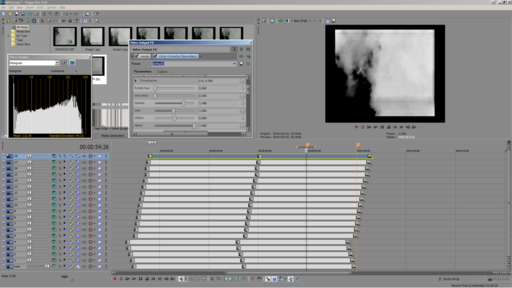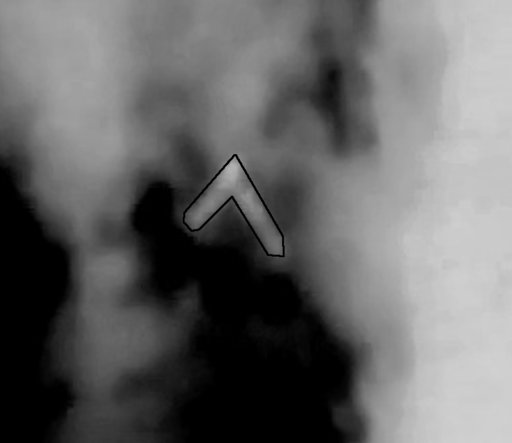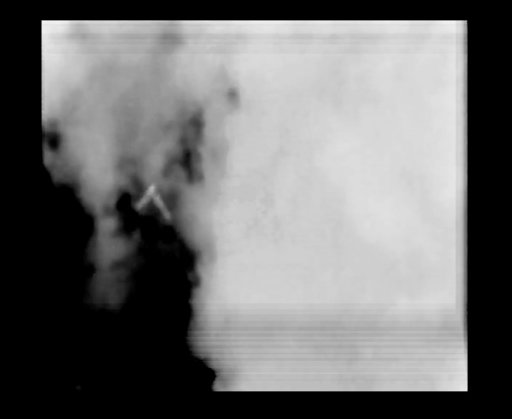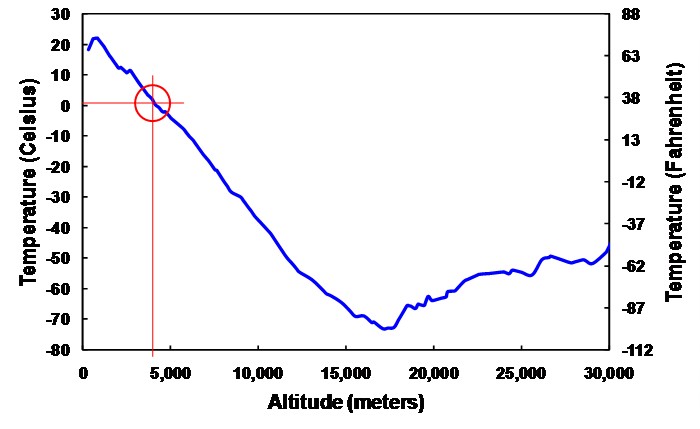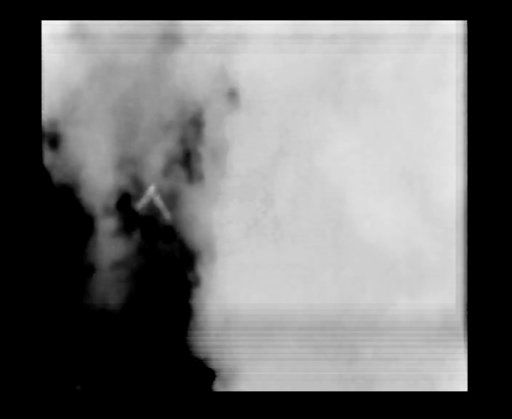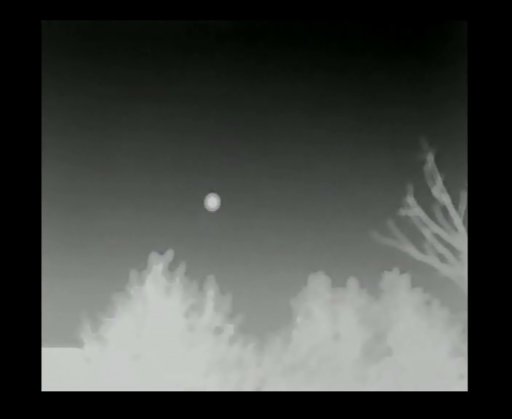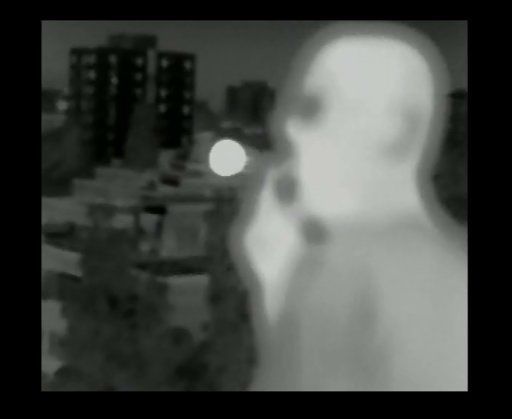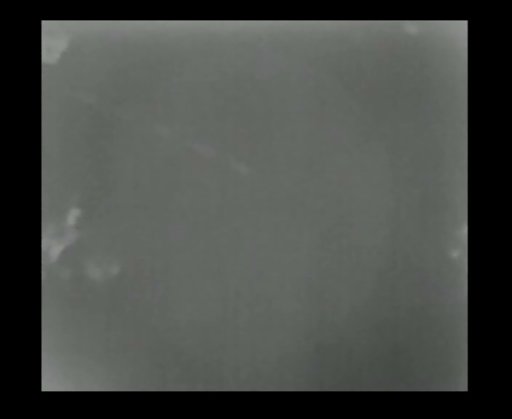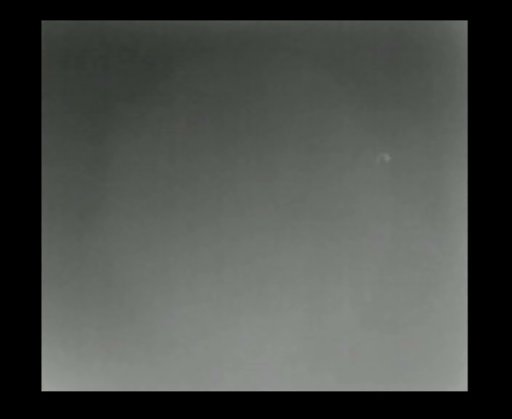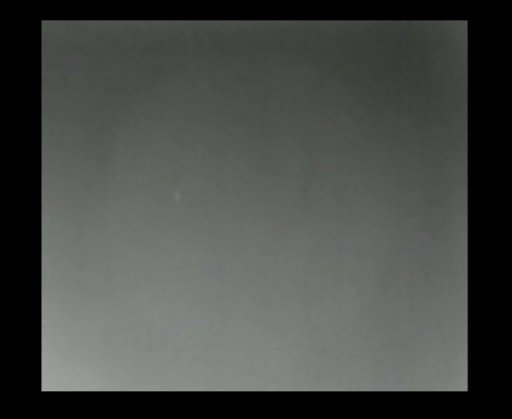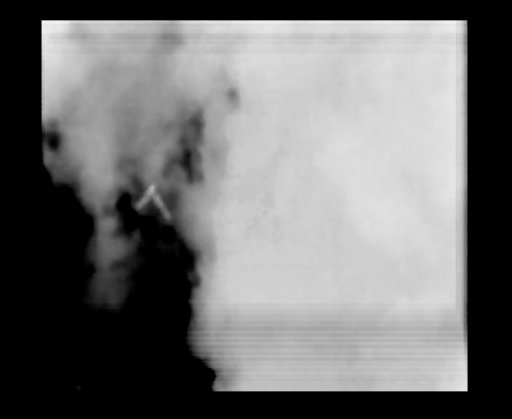You do a lot of speculation and make a lot of unsubstantiated claims.
1- The shape is visible only when enter the clouds. Birds are hot compared to -50 Celsius of the clear sky, the birds would have glowed bright on the dark patch of sky and glow lower when entering the clouds.
In the first frames you may see only small spots of the craft but when completely enters in clouds, you may see the full shape.
Actually, you can see the shape perfectly well when the clouds are not in the background. The contrast is not as obvious, but the degree of contrast is the only thing that changes.
Regarding the expected heat signature, how do you know this? Before you can say this with certainty, you need to take pictures of flying birds (preferably the same kind of bird, assuming that's what they are). Birds are extremely well insulated, and to say that they would have had a strong heat signature makes no sense to me, but even putting that opinion aside, you need to provide evidence that a bird will produce the kind of heat signature that you claim. Your assumption regarding this is not evidence. It's just an idea you came up with which must be substantiated before it has any value. Remember also that most of the cross-sectional area you see when looking up at flying birds is the wings, which have only very skinny strips of living tissue within them. The rest is all feathers, which do not emit heat of their own.
2- Enormous speed: Look how fast is moving compared with the clouds. Birds rarely exceed 100 km/h while
cruising, especially against wind! The calculated speed is 62Km/h for clouds and 725km/h for the object in Earth frame reference. The object fly in opposite direction to wind so it actually have 725+62 km/h =787 Km/h relative air speed.
You cannot determine the speed of an object based on the change in viewing angle over time unless you know the distance that the object is away from you. Also, you cannot even know the change in viewing angle without a reference since that angle will appear different when viewed through lenses of different focal lengths. I see no indication that you took any of this into account. Those birds were certainly much closer to you than the clouds, and that by itself would make their angular speed much greater than that of the clouds. Actually, if you spent any time watching birds fly overhead you would see this problem immediately. A typical neighborhood songbird flying overhead at rather slow speed but at a height of only 100 feet would cross the field of view in much less time, and thus appear much faster in any two-dimensional representation of the view. Your conclusion regarding speed remains unsubstantiated at this time.
3- Enormous size of over 100 meters with thick profile, not lines: The clouds were alto-cumulus type, between 4 to 6 Km above sea level. Bucharest is 70m ASL (above sea level). Supposing 5 Km altitude ASL (more or less), and using trigonometric tangent function in a right triangle, knowing field of view of SR35 FLIR camera 15 x 20 degrees, you calculate that :
Content from external source TAN(fov/2)=Xpixels_halved/altitude
Knowing that camera has 240 pixels with a fov of 15 degrees you can calculate that one pixel is about 5.5m.
Here, you finally get around to mentioning altitude. I'm not the best person to check your math, but the problem is that you assume a value for the altitude of the clouds (actually, you don't make it clear whether this is the altitude of the clouds or the "object"), and then compare the angular spread of the object, but as noted above regarding travel speed, that is invalid until you also know the altitude (distance) of the object. Perhaps you can make a reasonable guess as to the altitude of the clouds, but you can't do this regarding the object. The object could easily be much lower and you would have no way of even knowing.
You are assuming the object is very high because you think it's a plane or some such thing. I think it looks like a flock of birds, so naturally I assume it must be much lower, given the apparent size. Which of us is right? We don't know yet, but since you made the claim, you are the one who needs to supply evidence that actually stands up to reason, and thus far, you haven't.
It's worth pointing out the tendency of the "object" to look like individual spots lined up in rows. That suggests it's birds, rather than a solid object. Also, one side of the "V" is longer than the other, which also suggests that it is birds. I've seen thousands of V-shaped flocks of birds in my life and one side of the "V" is always longer than the other. I can't think of a reason why a manmade flying object would be so obviously asymmetrical.

